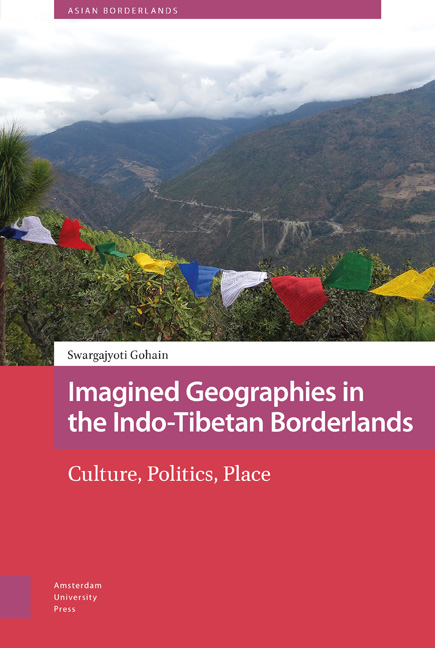Conclusion: Corridors, Networks, and Nodes
Published online by Cambridge University Press: 25 November 2020
Summary
[I]t has become increasingly clear that all human cultures are shaped and transformed by long histories of regional-to-global networks of power, trade and meaning […] it has become possible for scholars to accept the idea that powerless minorities have accommodated themselves to global forces (Tsing 2005: 3).
Monyul is a place bypassed by states and geopolitics – a former trade corridor (Aris 1979b) caught up in, first, colonial boundary-making and then postcolonial nation-building processes, eventually turning into a ‘geographical blind spot’ (Harris 2013). Monpa trade narratives and oral histories of migration enable an image of Monyul that counters its current representation as a remote periphery. Yet, neat spatial analogies are seldom possible, as competing allegiances complicate Monyul's identity.
As I detailed in Chapter One, in its premodern political geography Monyul was the geographical and cultural borderland of Tibet. As the seat of temporal power (the Kashag or ‘governing council’) as well as spiritual authority (the Dalai Lama), Central Tibet was the ‘core’ in relation to peripheral Buddhist regions, and Monpas were subordinate to Tibetans in both political and economic terms. Yet common ties of religion and culture, and trade exchanges between Bhutan, Tibet, and India via Monyul, alleviated Monpas’ peripheral status. Seasonal trans-Himalayan migrations, arising from trade, pilgrimage, transhumance, and tax-collection, constructed Monyul as a corridor in a ‘transnational circuit’ zone (Rouse 1991). Although the pre-colonial and colonial routes have now disappeared or become defunct, current politics give renewed vigour to older memories and narratives of cross-border trade, pilgrimage, and kinship.
I do not suggest that Monyul's corridor status can be revived or that earlier networks connecting Tibet to its borderlands can be retrieved in the present. Other social and political arteries, including national as well as regional postcolonial identities that have assumed prominence with the reorientation of Monyul from Tibet to India, have ensured that present geographies cannot be coterminous with the geographies of an earlier period. As explored in Chapters Four and Five of the present work, the political events in Tibet in the 1950s, especially the 1962 India-China boundary war, led not only to Monyul's disconnection and loss of its role as a corridor but also to its simultaneous fashioning into a militarised zone and marginal border.
- Type
- Chapter
- Information
- Imagined Geographies in the Indo-Tibetan BorderlandsCulture, Politics, Place, pp. 201 - 220Publisher: Amsterdam University PressPrint publication year: 2020

